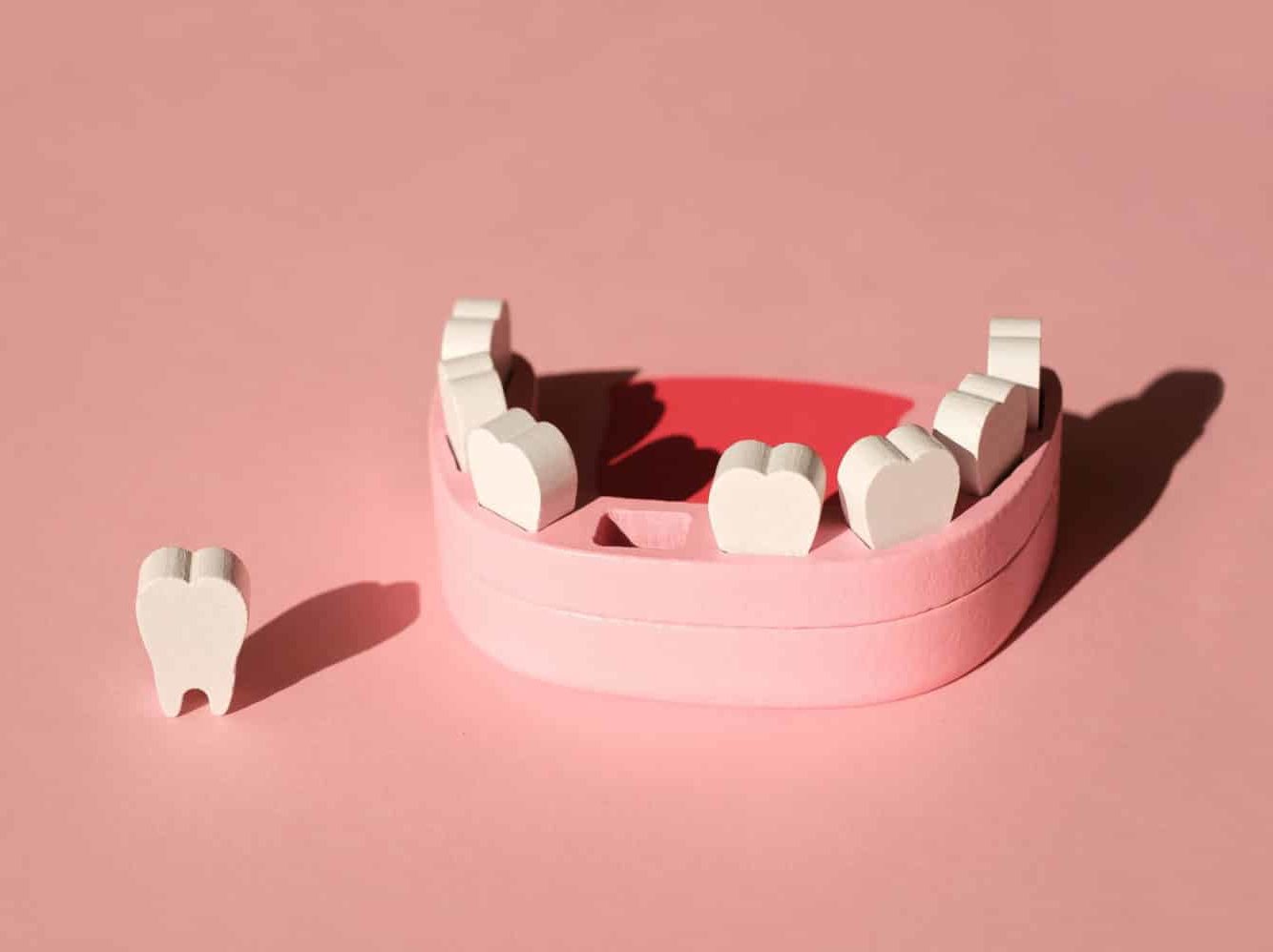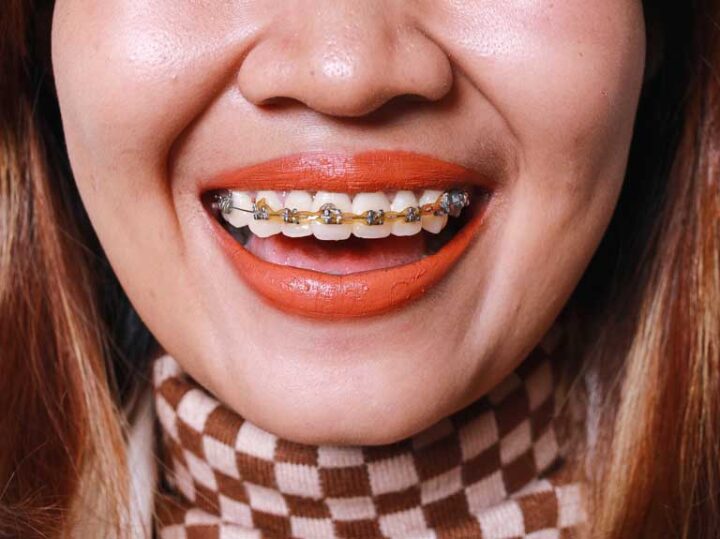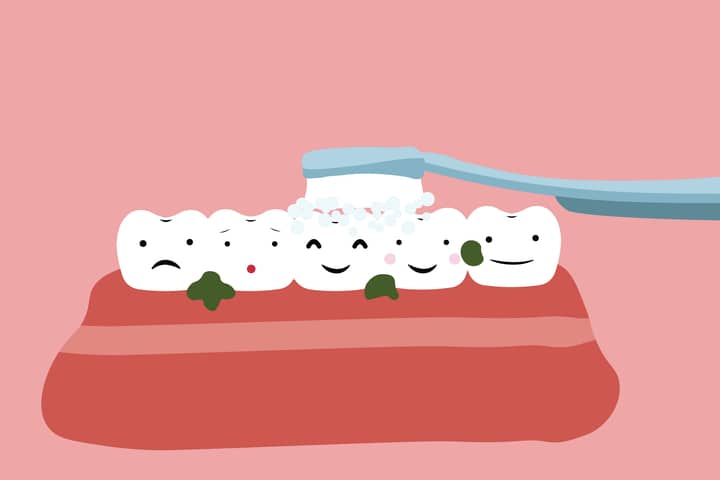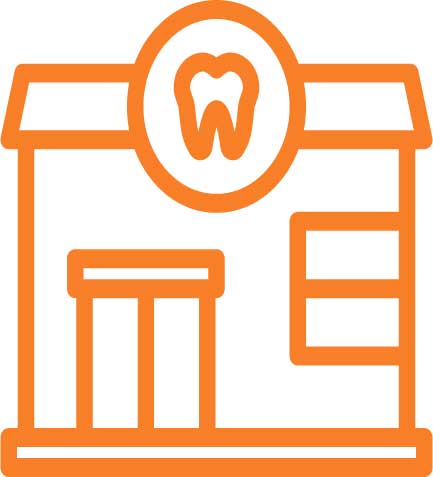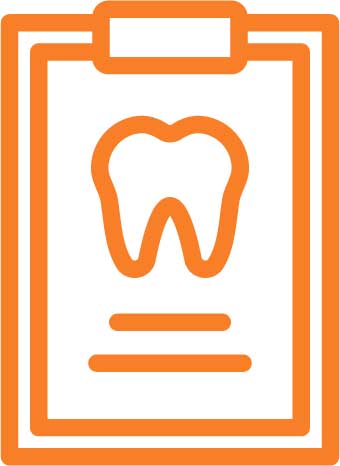Some people are born with the potential of missing teeth. Genetics can determine what teeth are present. If you have missing teeth, your family may have experienced the same. Similarly, teeth sometimes lack space to erupt and stay hidden in the gums. Teeth are also lost due to decay and gum disease necessitating extraction. Sports injuries and other forms of trauma can also lead to teeth being lost.
Dr Alison Roberts provides an insight into the impact that a missing tooth can have on the surrounding teeth. Dr Roberts will also delve into the different treatments options available for tooth replacement.
Are there any consequences of having a missing tooth?
Teeth move no matter what. If you have a space from a missing tooth, the adjacent teeth can drift into that area. The gaps are prone to food trapping and can make them difficult to replace in future. Alignment can also be an issue as the teeth drift into the void.
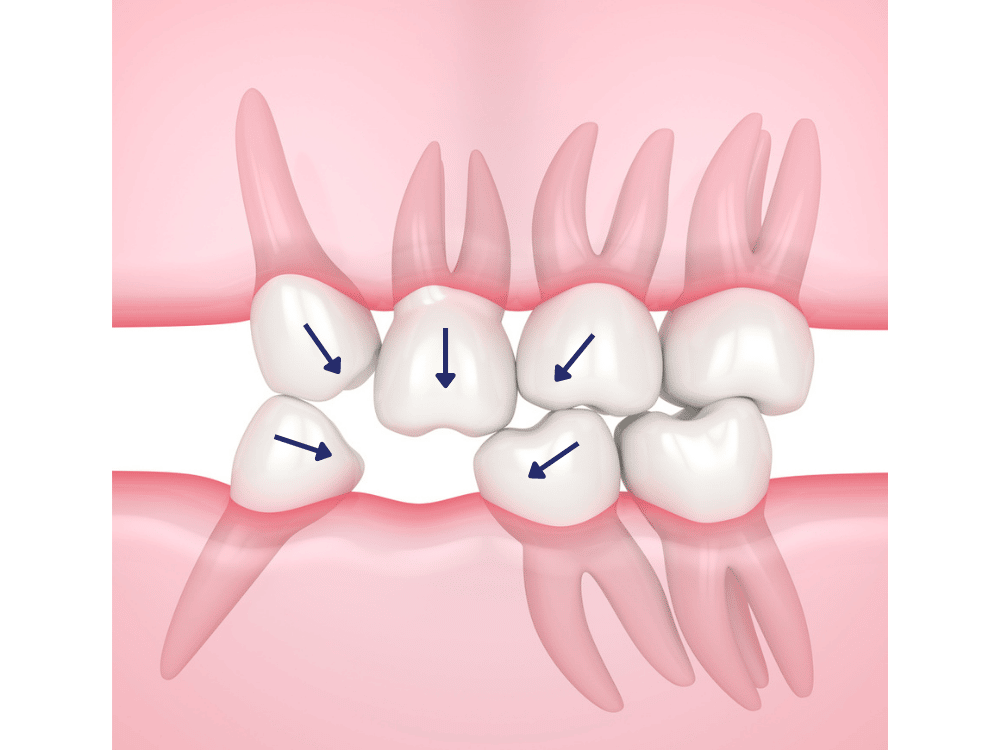
Braces may be required to correct the alignment before a replacement can be made. If sufficient teeth are remaining, the function should remain relatively normal. However, if you have multiple missing teeth, chewing may become challenging. The surrounding teeth can also become stressed as the bite force is spread over fewer teeth. Speech can also be affected if a tooth is missing towards the front of the mouth. Pronunciation of certain sounds may become more challenging.
What are the options available for tooth replacement?
Doing nothing is an option; space can be left if you wish. But, these days, it is ideal to replace missing teeth. There are plenty of replacement options to explore when restoring missing teeth.
Dental Bridge
A “bridge” uses the adjacent teeth on either side of the gap to support a fake tooth. The teeth that support the teeth need to be “shaved” down to create space for the bridge to sit on top. Although this may seem invasive, it’s necessary to provide sufficient support for the dental bridge. Dental bridges are typically made from metal and/or a type of ceramic as they blend well with your natural teeth. However, a bridge is not for everyone. The adjacent teeth need to be in good condition and free from gum disease to provide support and a good foundation for the dental bridge.
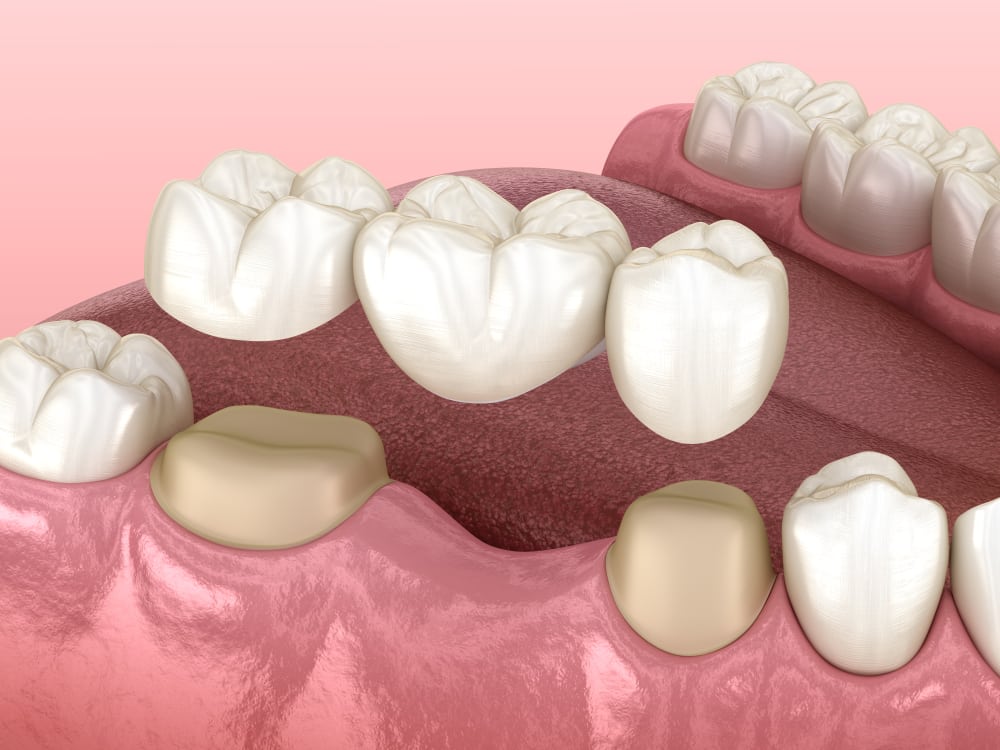
Pros
- Natural feel
- Good bite force, almost as strong as natural teeth
- Alignment of adjacent/ supporting teeth can be corrected with a bridge
Cons
- Adjacent/ supporting teeth need to be adjusted to accommodate the dental bridge
- Flossing can be challenging as unable to get between the teeth
- Supporting teeth must be healthy and no presence of gum disease
- Can be costly
Dental Implant
A dental implant is fabricated from medical-grade titanium, a permanent solution to a missing tooth. Essentially, it’s a metal root replacement buried in the jaw bone, and then a false tooth is placed on top. An implant is considered the most effective replacement as it resembles a natural tooth and has a well-documented success rate.
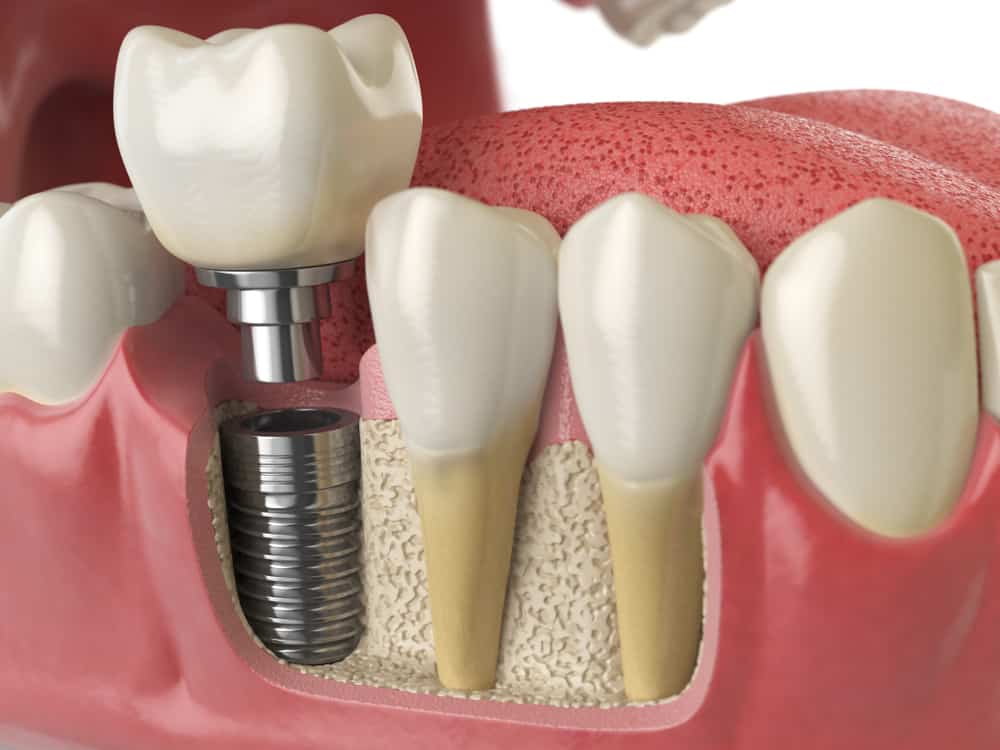
Pros
- Strong bite force and feels most like a natural tooth of all the options
- Easy maintenance (floss as usual if single implant)
- Will not suffer tooth decay
- No involvement of adjacent teeth is required to support the implant.
Cons
- Generally costly
- Can be susceptible to gum disease
Dental bridge vs Dental implant
It’s good to remember that a dental bridge may need to be replaced every 5-15 years, depending on the care taken to look after it. Implants are considered a more permanent solution.
Removable Dentures
Dentures are the most cost-effective method of restoring missing teeth; they are typically fabricated from plastic teeth that are supported on a metallic or acrylic frame. It is the quickest and cheapest way to replace missing teeth. Dentures can also be used as a temporary measure until a more permanent fixture is placed.
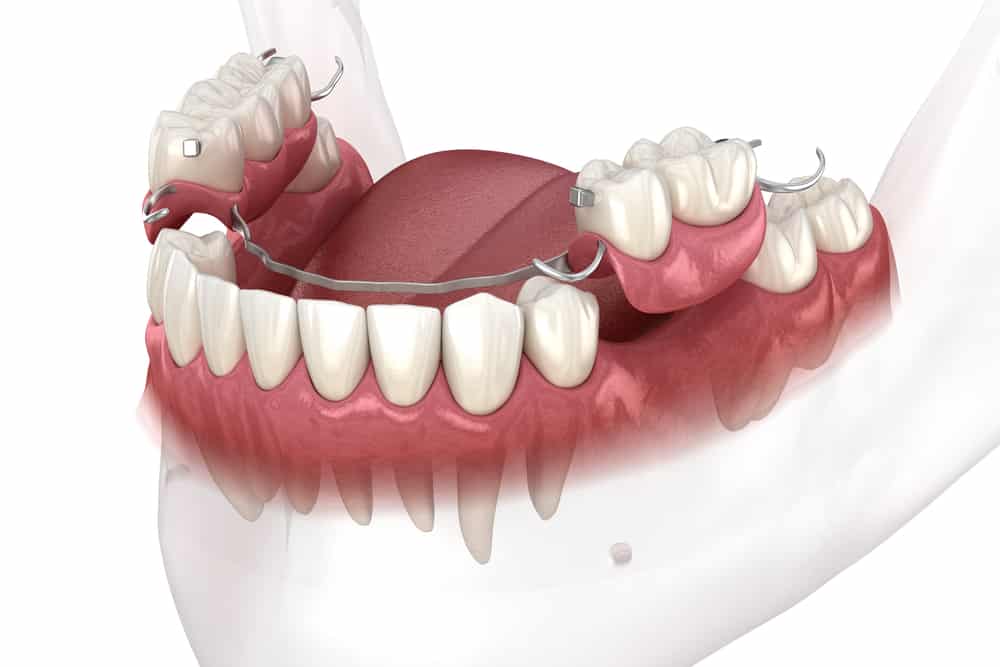
Denture teeth’ bite force is much weaker than the alternative bridge or implants. Typically, dentures are larger, which takes some time to adjust to the altered sensation of wearing a removable denture.
Pros
- Cost-effective and most economical way to replace missing teeth
- Removable and easy to clean
- Dentures can be quickly fabricated and modified
Cons
- Needs time to acclimatize, can affect taste and mouth feel of food
- Will become loose as gums shrink
- Potential to be lost or broken
- Adjustment time needed to adapt to removable nature
- Weaker bite force compared with implant or bridge
Is replacing a missing a tooth costly?
Implants, bridges and dentures all have different cost implications. The longevity of the tooth replacement has to be factored into the initial costs, and the most expensive option is often the best long-term option. The complexity of each case and the materials used are also a factor.
Is tooth loss preventable?
Yes, it is possible to prevent tooth loss. Good oral hygiene, a careful diet, managing tooth wear and protection against tooth fractures play an essential role. Regular visits to a dentist will ensure everything is safe and sound.
As we become more motivated and educated about looking after our teeth, tooth loss is much less common. Thankfully, technology has advanced, and techniques have improved, so replacing lost teeth is much more successful. However, we recommend that you have your teeth examined and discuss the best replacement option for your needs and budget.
To book a consultation, please call our friendly reception staff on
6733 9882 or send your enquiry to enquiry@smilefocus.com.sg

